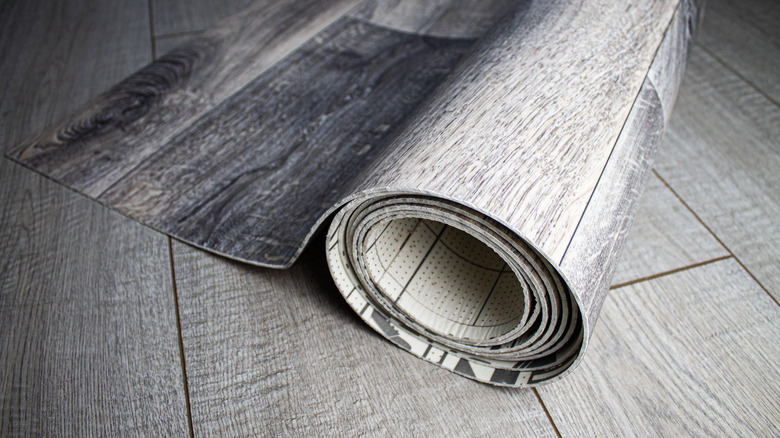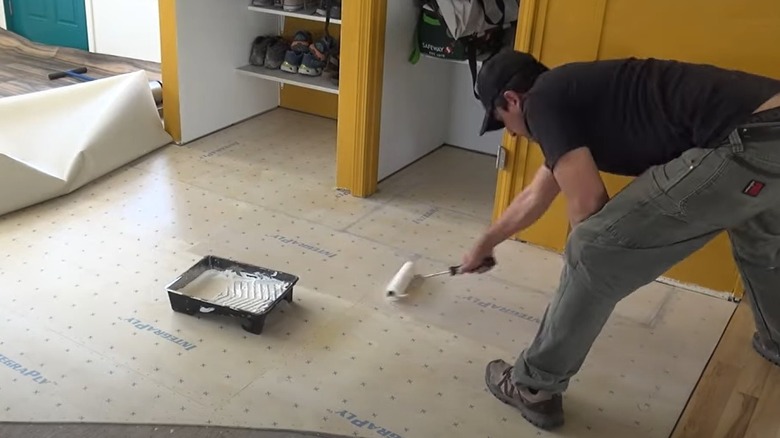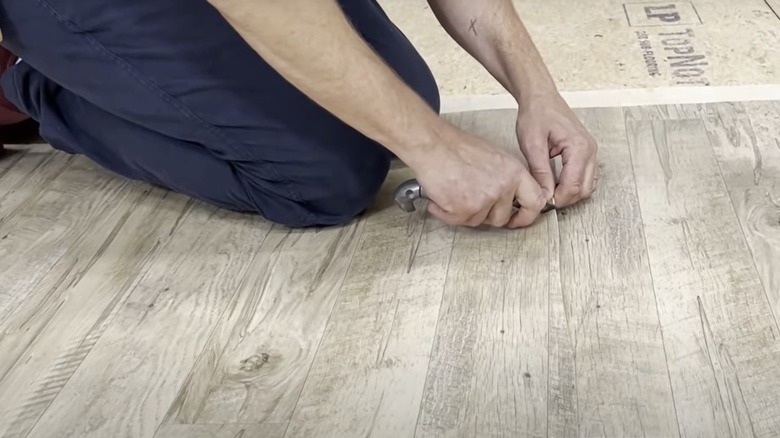The Best Way To Hide Vinyl Floor Seams
When installing a roll of vinyl in almost any room of your home, chances are high that you are going to have a seam. You can purchase varying widths of the material, usually 4 feet, 6 feet, or 12 feet. Unless you're extremely lucky, though, it's not likely that any of these standard widths are going to perfectly fit the space where you're installing them, meaning that you may end up with a seam between two pieces. No one wants to see this gap or obvious edge when they are looking at the floor. Fortunately, you do have a few options for making the seams in the vinyl less obvious or even hiding them altogether. You can use a tool that reduces an obvious seam, you can use installation techniques that serve to hide it, or you can arrange the furniture in the room to conceal it.
People often select rolls of vinyl or laminate flooring because they have multiple designs available and are extremely durable. Cleaning vinyl floors is easy as well. However, if you end up with clearly visible seams, it takes away from the benefits of this type of material. Although you can install the rolls yourself and take steps to make the edges less obvious, if this is a serious concern for you, you may want to invest in having a professional do the work. You can expect to pay $1 to $2 per square foot for a professional installation of a sheet of vinyl.
How to seal the seams in vinyl sheets
Not only does properly hiding the seam in your sheets of vinyl create a better-looking final layout, but it also generates a waterproof barrier. You don't want a liquid spill oozing between the two sheets and reaching the subfloor, where it could lead to rot, odors, or mold. Essentially, a mismatched seam between two pieces of rolled vinyl flooring could ruin the installation.
Lay the two pieces side by side, ensuring that the patterns on them perfectly line up. Even having them a fraction of an inch off is going to make the seam highly visible because of the mismatched pattern, which is exactly what you don't want. If you have vertical lines that extend across the entire length of the roll, cut both pieces along these lines, so you can place the seam on this line. This will hide the edges between them well.
Use a roller or brush to spread adhesive made specifically for vinyl edges across the subfloor at the location where the pieces will abut. Then lay them side by side along the line of adhesive. You can adjust them slightly after setting them down while the adhesive is still wet to line them up perfectly. Finally, run a seam roller over the edges to ensure they are tightly affixed. Use a seam sealer product over the edge where the pieces meet to seal and waterproof them. Then glue the remainder of the vinyl to the subfloor.
Other options to hide a seam between vinyl sheet pieces
If you have an existing vinyl roll installation where you are trying to make a loose seam less noticeable, you can try to hide it from view until you have a chance to try to fix it. You can move furniture to try to make the edging less noticeable. Placing chairs and sofas over the top of the edge also takes it out of a foot traffic area, where someone could stumble over a loose edge and possibly pull more of it away from the subfloor. However, avoid placing this seam in an area where people will drag furniture across it regularly, such as underneath a kitchen table with constantly moving chairs.
If you have a room with a specific traffic pattern area, try to lay the edges between sheets so that they are away from the foot traffic. If you must place the seam in an area with foot traffic, add double-sided tape along with the adhesive to hold it in place under this extra stress.
It's also possible to try to fix a loose edge on an existing installation to make the seam less noticeable. Start by lifting the area that is beginning to peel. Clean underneath it to remove any pet hair or other debris. Scrape away any old glue. Use a hairdryer on the edge to warm it and to make the vinyl pliable. Then follow the steps we listed earlier for gluing a seam down.


